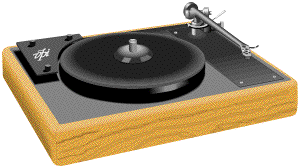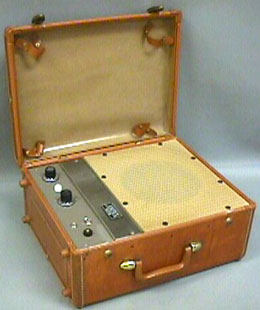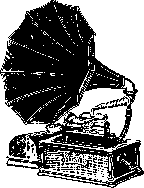|  |
Is it possible to put together a decent playback system for $1,000? Yes, but you'll have to rely on two unconventional strategies.
First, buy pre-owned equipment.1 The High-End has been around in one form or another since the 1950s and there is 50 years worth of good quality gear available on the used market. For the careful shopper, there are excellent bargains to be had, even if purchased at fair market value. Because so many audiophiles are obsessed with having the latest product, there's a wealth of well cared for, sometimes barely used equipment out there, often for 40-60% off the original price.
Second, put half of your budget into the front end (turntable, tonearm, and cartridge). Ignore conventional wisdom which suggests spending as much as possible on speakers. After all, information not retrieved off the record in the first place can never be recreated further down the audio chain. Also, a good quality turntable, properly set up, is your best insurance against long-term record wear.
Ultimately, your own ears and your wallet will have to be your guide, but here are some specific recommendations that will give you, if not the Absolute Sound, at least a taste of the High-End.
Note: The (prices) mentioned below represent current value for used equipment in good to excellent condition in $US in the USA.
- Rega Planar RP1
- Pro-Ject Debut Carbon Esprit
- NAD 533
- Music Hall mmf-2,2
Beginning at US$499, including an arm and a Goldring cartridge, this is probably the "Best Bang for the Buck" among new units. - Dual CS500 Semi-Automatic - Several models to choose from, but easier to find in Europe.
- Thorens TD-158
- Rega, Grace, Audioquest, Sumiko, early SME or similar tonearms. The important thing is that it be fully adjustable. However, new, as well as used turntables will probably have one of these arms already installed. The Maplenoll comes with its own dedicated arm.
- Grado or Goldring are two brands to keep in mind, as well as the Audio Technica AT95E. The entry level Nagaoaka cartridges are also a sonic bargain. Granted, the lower priced models have minor colorations, but you'll have to increase your budget to move up to a truly neutral sounding pick-up. Consider, though, the new line of Clearaudio moving magnets, including the Clearaudio Aurum Classic for $325.00. Of course in this price range, you may also wish to audition one of the Grado References. In considering your choices, remember that the less expensive (and older) phono stages will not provide enough gain for a modern low-output (1.0mV or less) moving coil cartridge. Investing in one of the latter will require the addition of a head-amp or more expensive phono stage. While the Sumiko Blue Point is popular in many circles, I've always found them to be extremely bright sounding. [My standard line is, "It'll take your ears off," but your frequency response may vary.]
Front End ($450-$550)

For a long time, I recommended the original Linn Sondek LP-122 and vintage SOTA turntables, along with the VPI HW-19 and HW-19 Junior. Now, it's not unusual to see them selling at close to their original price tags (especially the Linn). Even the classic AR XA has been turning up at online auctions for prices that far exceed its true audio worth.
Must have it new? The choices in this price range are limited, but not impossible. Consider the following...
Better Quality 2-speed Turntables (33 and 45 rpm):
Still too much to spend? Luckily, Jerry Raskin's Needle Doctor even has new, entry level tables from $99.95.
Tonearms
Phono Cartridges
Electronics ($100-$175)
Tube lovers will find best buys in vintage Dynaco gear, such as the SCA-35 integrated amplifier, the PAS-3 pre-amp, and the Stereo 70 amplifier. Consider, also, a 1960's era tubed Fisher or Scott stereo receiver. For those who prefer solid state, try a NAD 3000 series integrated amplifier (such as the 3020 or 3120) or 7000 series receiver (7020 or 7030). [Confidentially, I'm a tube lover, but these NAD's are great buys. At this price level they have no right to sound this good.] Entry level gear by Creek or A&R/Cambridge (now known as Arcam) also represents a higher value than their cost suggests.
Speakers ($250-350)
Thanks to computer design and modern materials, there are growing number of better quality entry-level speakers. These include the NHT bookshelf speakers and Wharfedale Diamond Series, especially suited for smaller listening rooms or apartments.
Electronics and Speakers Together ($150-$250)

Recently, a colleague demonstrated a pair of Ampex 620s and the sound quality was astonishing! Imagine a pair of small suitcases, each containing a classic Williamson push-pull amplifier offering 10 watts from a 6V6 output stage. The speakers were made by JBL, the original John B. Lansing, himself. Lansing helped Ampex set up a speaker factory in the early years, because Ampex was also making theater speakers to go with their theater sound systems. By the late 1950s, JBL was contract manufacturing the speakers for Ampex. Some swear by the original red-case 620's, some also like the light-brown case 620's.
Very similar in sound to these (and cheaper on eBay) are the A692 and 2010 gray-case speakers. The A692 is the original amp design with the 5879 first stage. The 2010 is the second generation amp with the EF86 first stage. The gray-case speakers have a bit deeper bass. The 2012 and later dark-brown 621 speakers had ports to further extend bass and some employed a crossover a tweeter. The original 620 was designed to be flat from 60hz to 10khz in open-air. The amplifier is designed to EQ-compensate for the cabinet. The same EQ circuit was used for the gray-case speakers but the cabinet has a bit more volume, hence the deeper bass. These are wonderful amps for most vinyl listening, but they are not the sort of full-range speakers that modern ears like. The original 620's have an external speaker jack on the front that has a built-in switch activated by plugging the 1/4" connector in that defeats the tone-compensation network and thus renders the amplifier flat. In other words, you get the benefit of a nice 10W Williamson amp that you can use with a modern (16-ohm) speaker and you have your basic Ampex combo.
These were originally sold in the 1960s as monitors for matching Ampex tape recorders, but many have become separated over the past 40 years. Although they only extend down to the 60-80Hz region, this is a true entry-level high-end component and a real sleeper. The sound quality is easily equal to a set of preamps, amps, and speakers that might otherwise sell for up to $2,500. Commonly found on eBay in singles or pairs, in both leather or cloth cases. The Ampex 622 is similar, but without the additional inputs and flexibility of the 620.
Modern alternatives include the M-Audio AV30 and AV-40, powered studio monitors, as well as the Tannoy Reveal Studio Monitors.
Interconnects and Cables ($50-$100)
In order to stay within the bounds of our budget, entry level products from Kimber and Cardas, are economical choices.
If you're feeling adventurous, you can actually roll your own for something close to the state-of-the-art at a very reasonable price.
An Alternate View
In 2003, reporter Gary Krakow of cable television channel MSNBC, also took the plunge and put together a respectable system for about $1,000. The only advice I would give here is that instead of doing the "Secret Ingredient" upgrade with an AuriCap, use a V-Cap TFTF, instead. They're absurdly expensive, but you'll be glad you did.
1. For sources of used equipment, please visit the Audio & LP Resource page.
2. Good news must really travel fast because the prices for pre-owned Linn LP-12 turntables and Sequerra Met 7 Mk II speakers has been steadily rising. In fact, it's no longer unusual to see used LP-12's advertised for $700+, which is almost what they sold for new 20 years ago! But don't give up -- the patient shopper can still find a bargain. FYI, in May and June, 1998, I was able to locate two pairs of Sequerra Met 7's for $250 per pair. One was in Audiomart, the other in rec.audio.marketplace.
When You Have More To Spend...
CD and Cassette Players ($100-$250 each)
Remember, we're still talking pre-owned here, but best buys include the Harman-Kardon 7000 series CD players (7400, 7500, 7600 and so on), units by Mod Squad, California Audio Labs, and the late, great Audio Alchemy. Also look for entry-level cassette decks by Rotel, NAD, or Nakamichi.
FM Tuners ($30-$100)
For FM reception, add a vintage Scott, Fisher, or Dynaco FM-3 tuner. The Dynaco FM-5 tuner is an economical solid state unit. For about $600 the Scott 310E comes close to the state-of-the-art Marantz 10B ($1500+) or Sequerra ($2500+) tuners.
Further Upgrades
Later you can upgrade the interconnects to any of the silver wire products by Kimber. When it comes to cables, the closer to the front-end, the greater the improvement. Therefore, if your resources are limited, put the best quality line between the turntable and the preamplifier. Continued upgrades further down the audio chain will yield better, but diminished, returns.
A Note On Cable Lengths: The best strategy is to keep them as short as possible. However, if a choice needs to be made, keep the following in mind: The run between the turntable and the preamp should be the shortest of all. Next, minimize the run from the amplifier to the speakers. If you need some length, make it between the preamplifier and the amp, but try to keep it under 16 feet (5 meters). For longer runs, step up to a heavier gauge wire or a double run of your favorite brand.
In the realm of electronics and speakers, the sky is the limit. But here's a useful tip if you're still on a budget. Look through back issues of The Abso!ute Sound or check out Stereophile's annual "Recommended Components" issue (usually published every October) and see what was top rated 10, 15, or 20 years ago. Many of these units are still good choices and you can probably afford them today. Classics include tubed preamps and amps by Audio Research, conrad-johnson, and New York Audio Labs. Preamps by Audible Illusions are good buys, too. In fact, issues 45 and 51 of The Abso!ute Sound featured surveys of vintage gear by Walt Bender and Lennice Werth, publishers of the now defunct hi-end buyer's club newsletter, Audiomart. Issue 39 (Autumn, 1985) included a survey of Desert Island Systems For $2500 (Or Less). The info is still good and today you can put these systems together for under $1K. However, the Desert Island has appreciated in value. Budget a few million.
 |
 |
 |
 |
 |
Main Page |
|---|